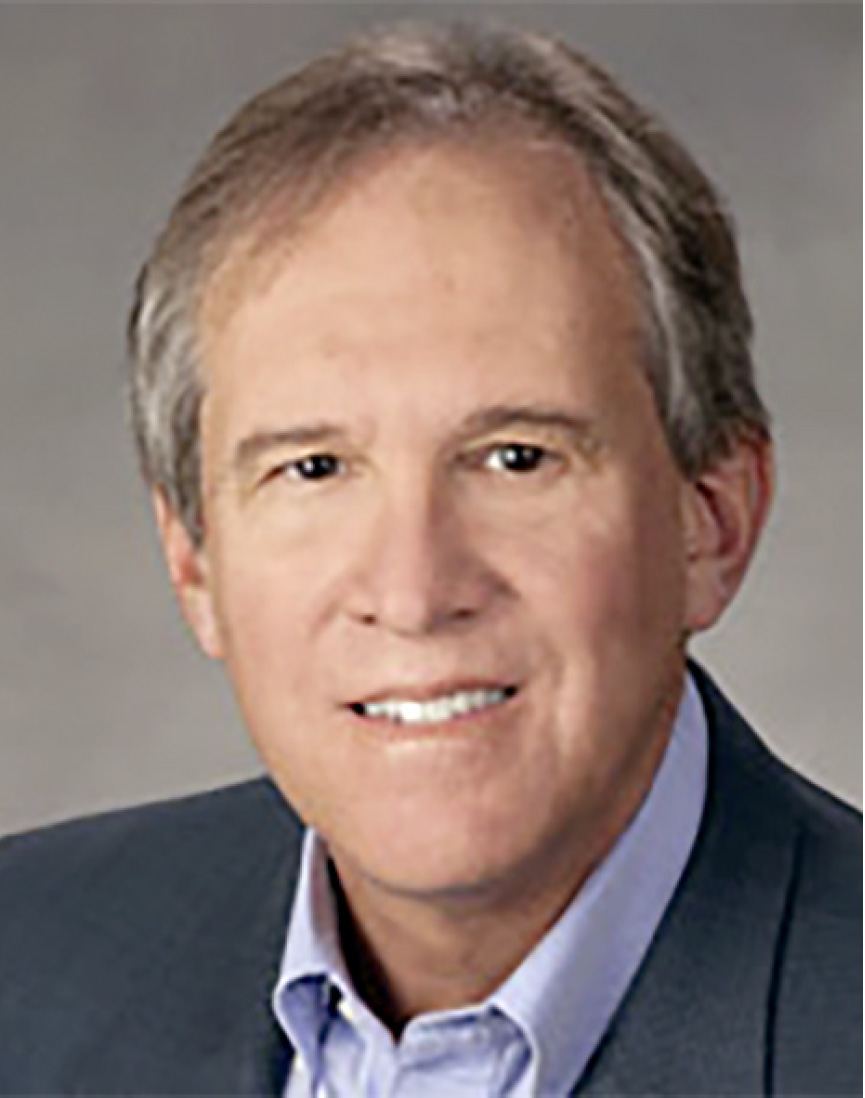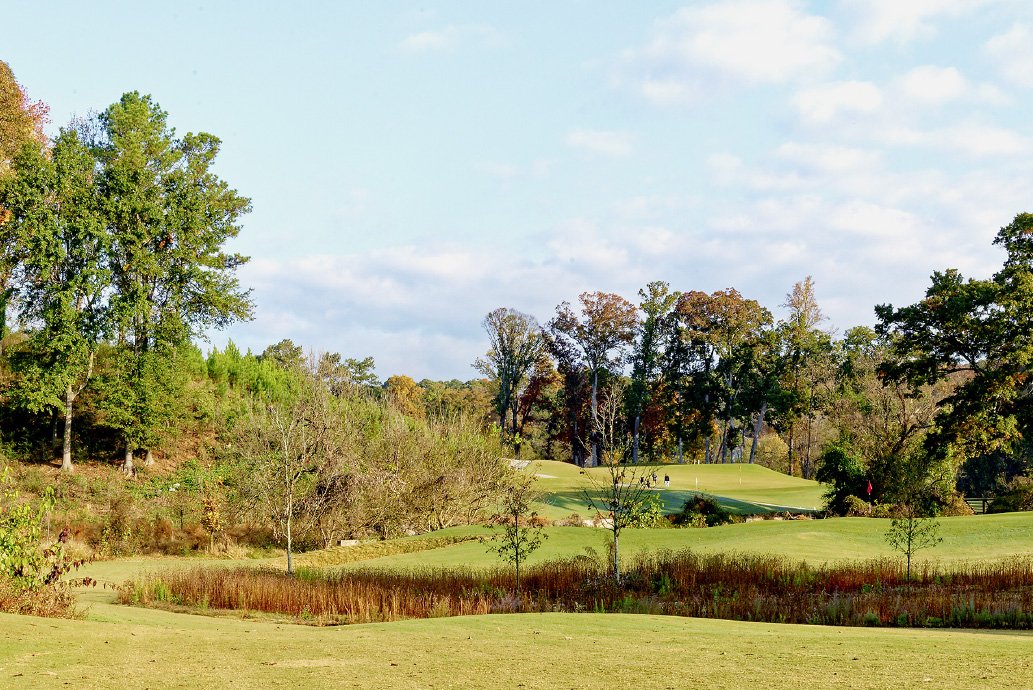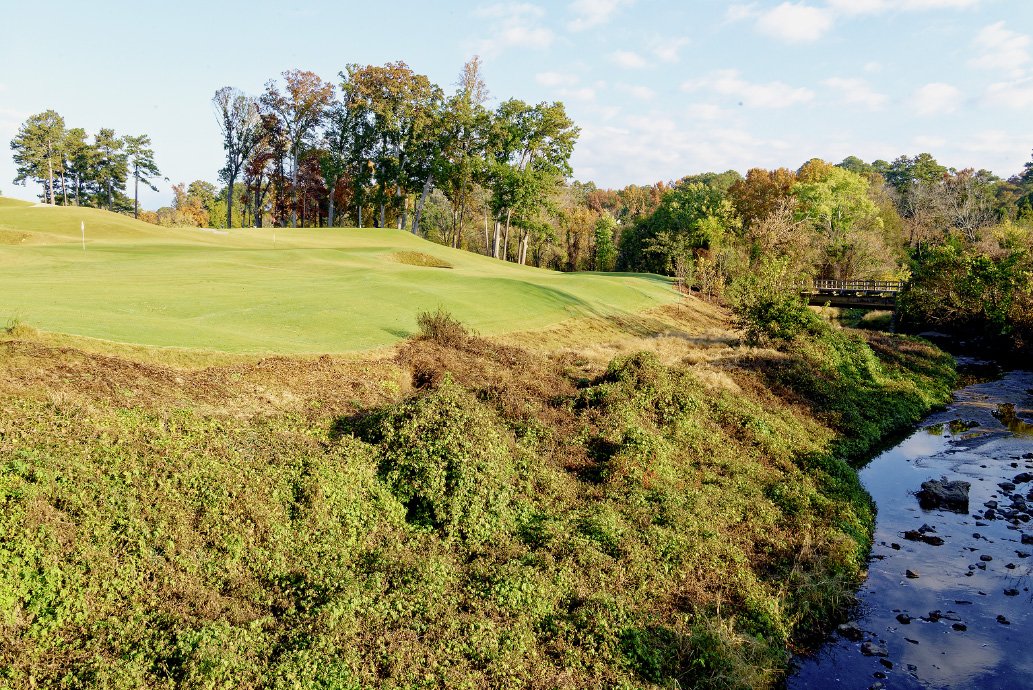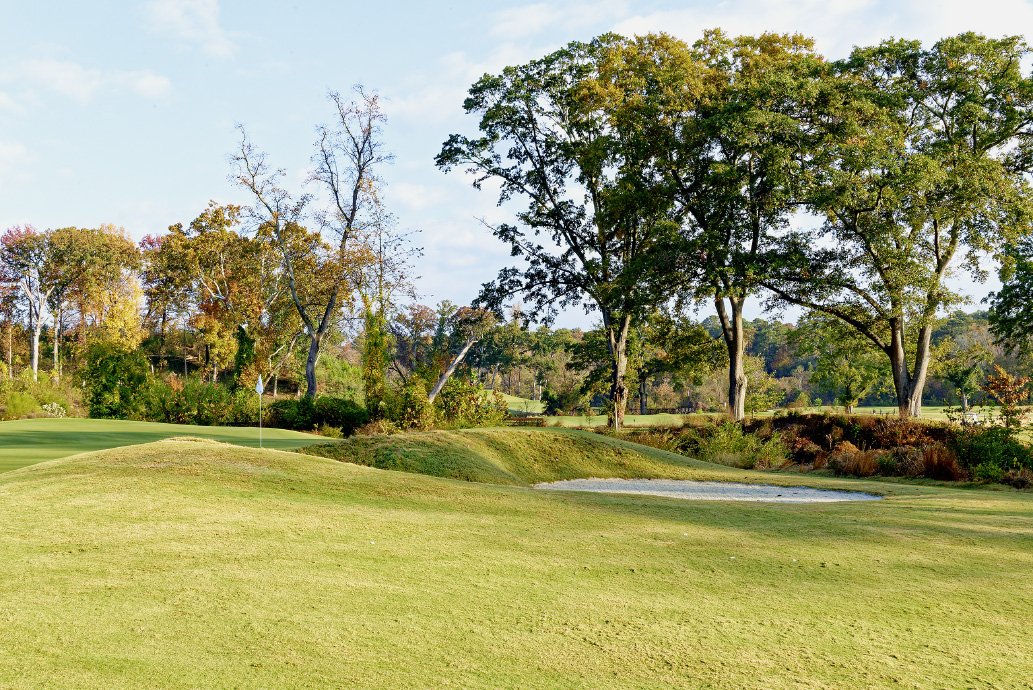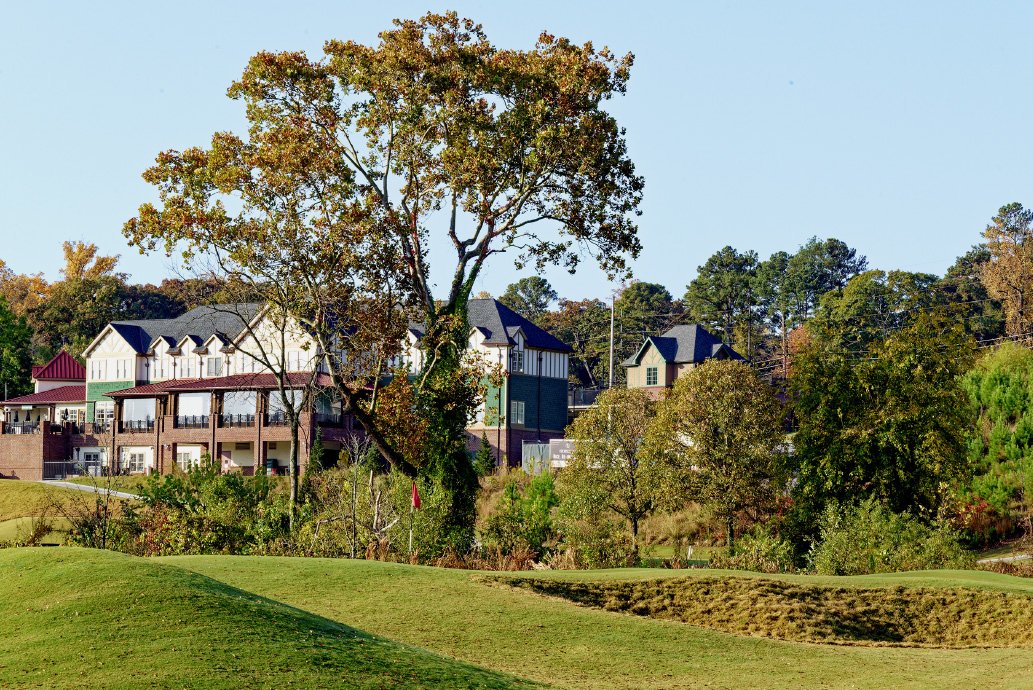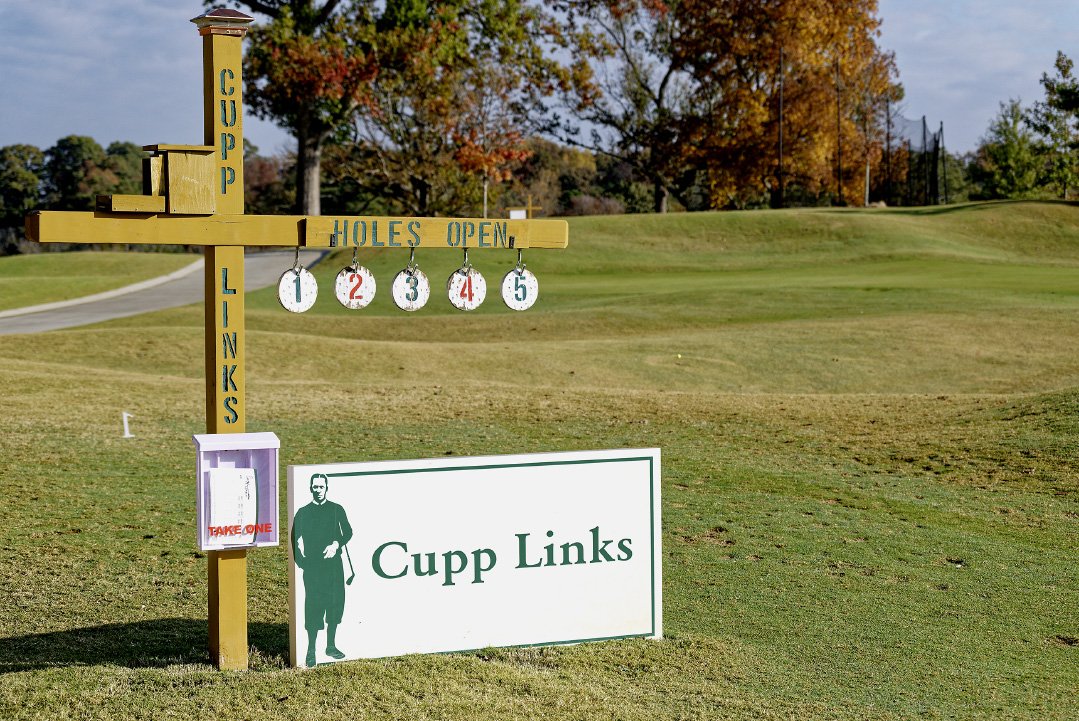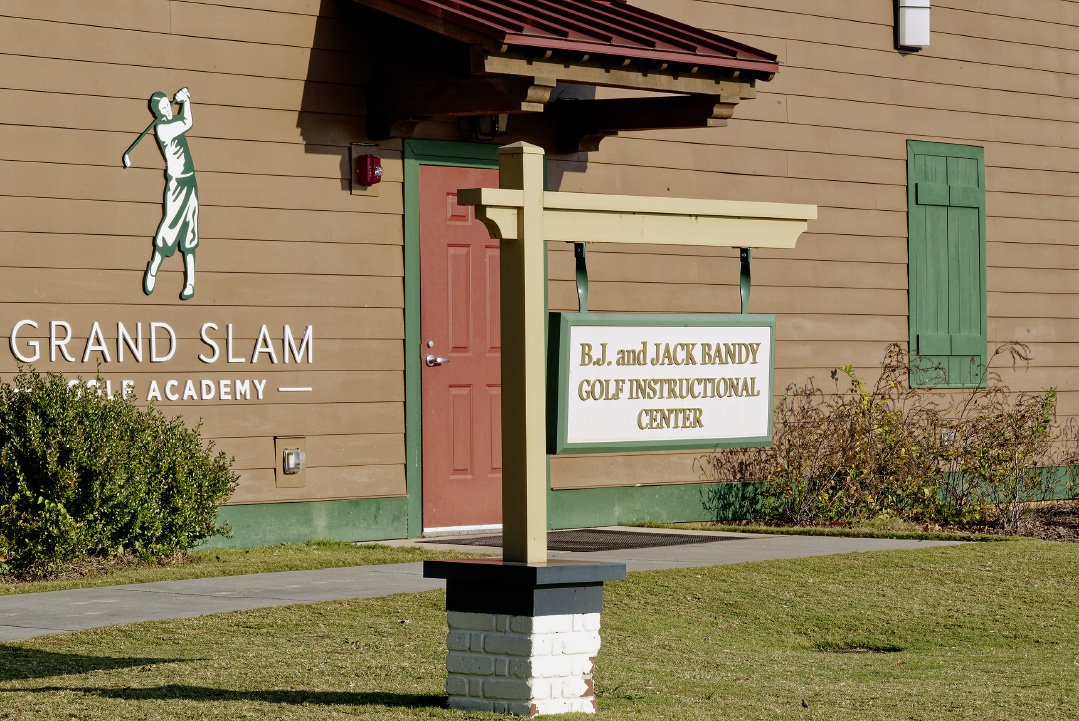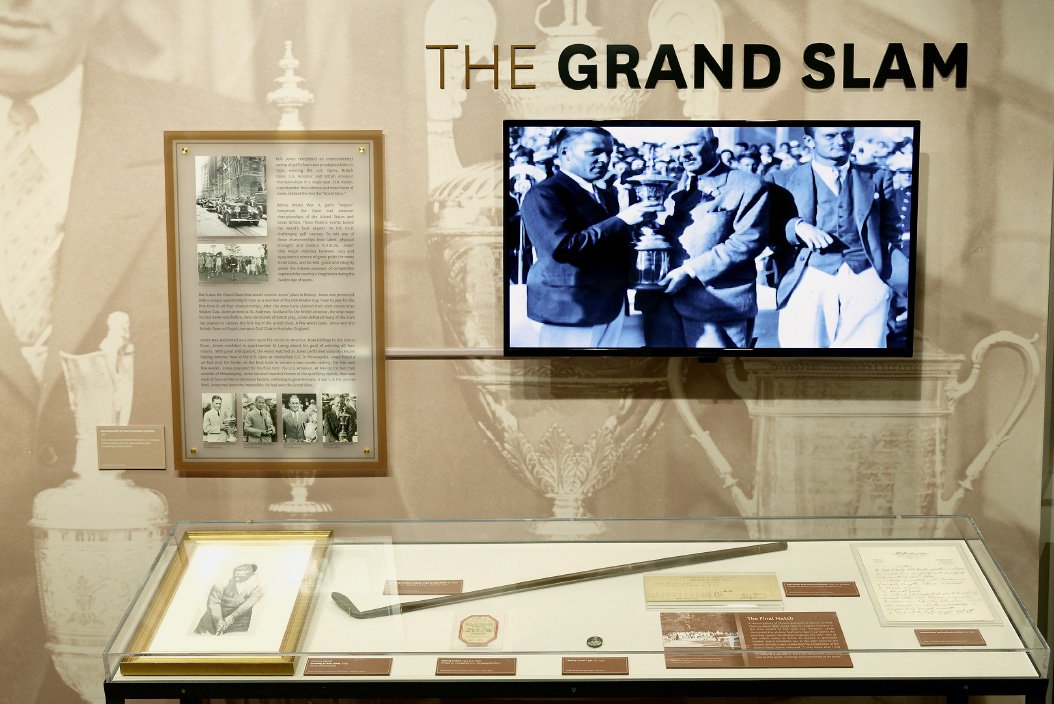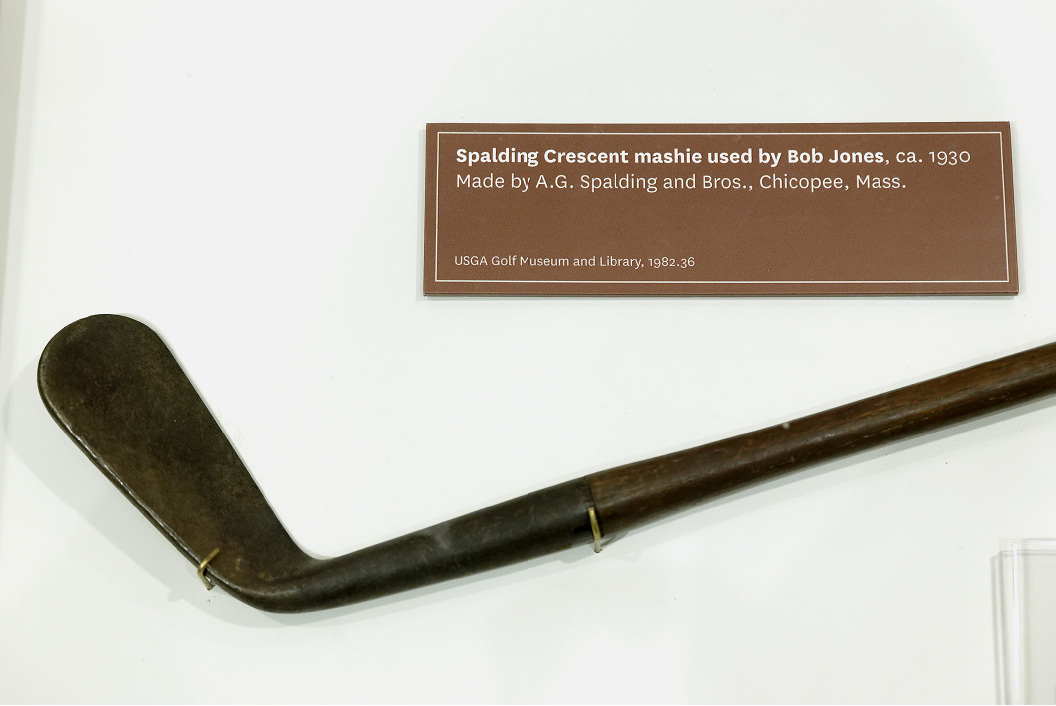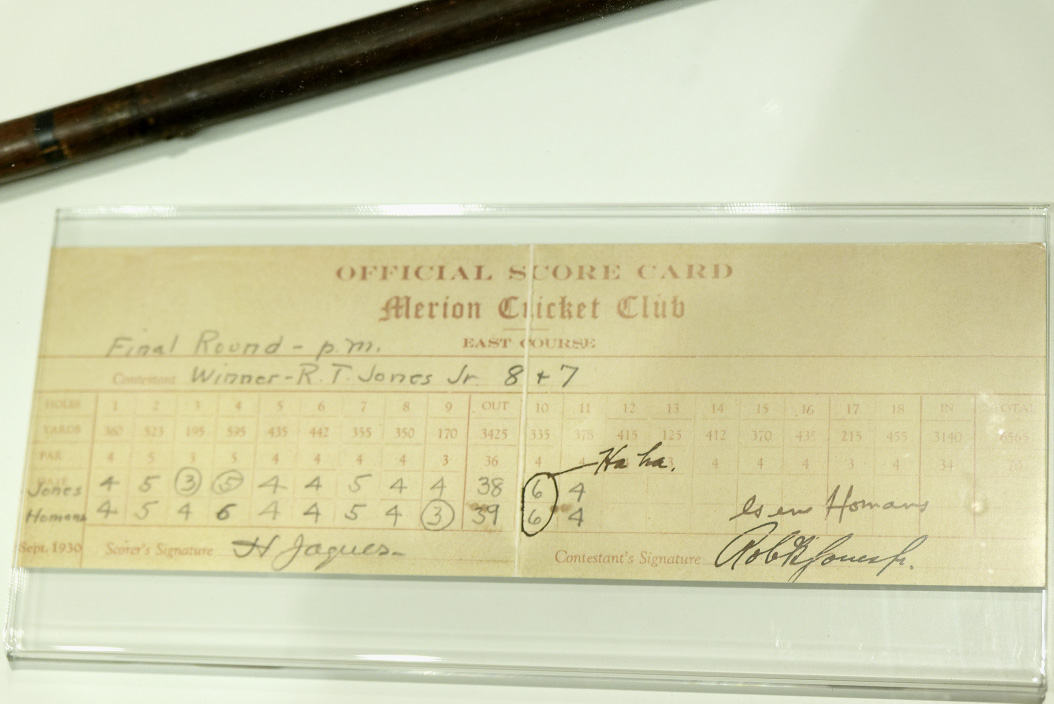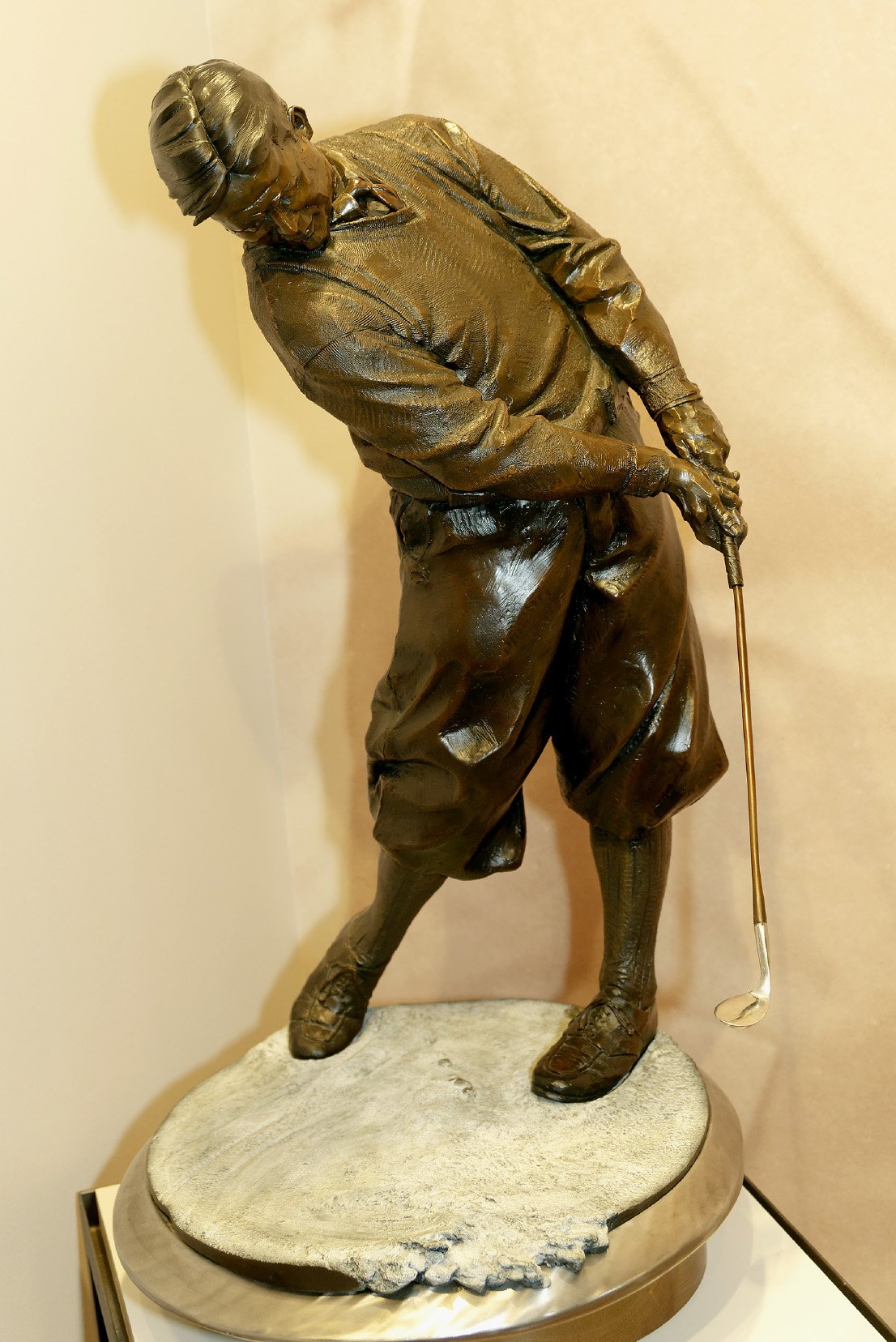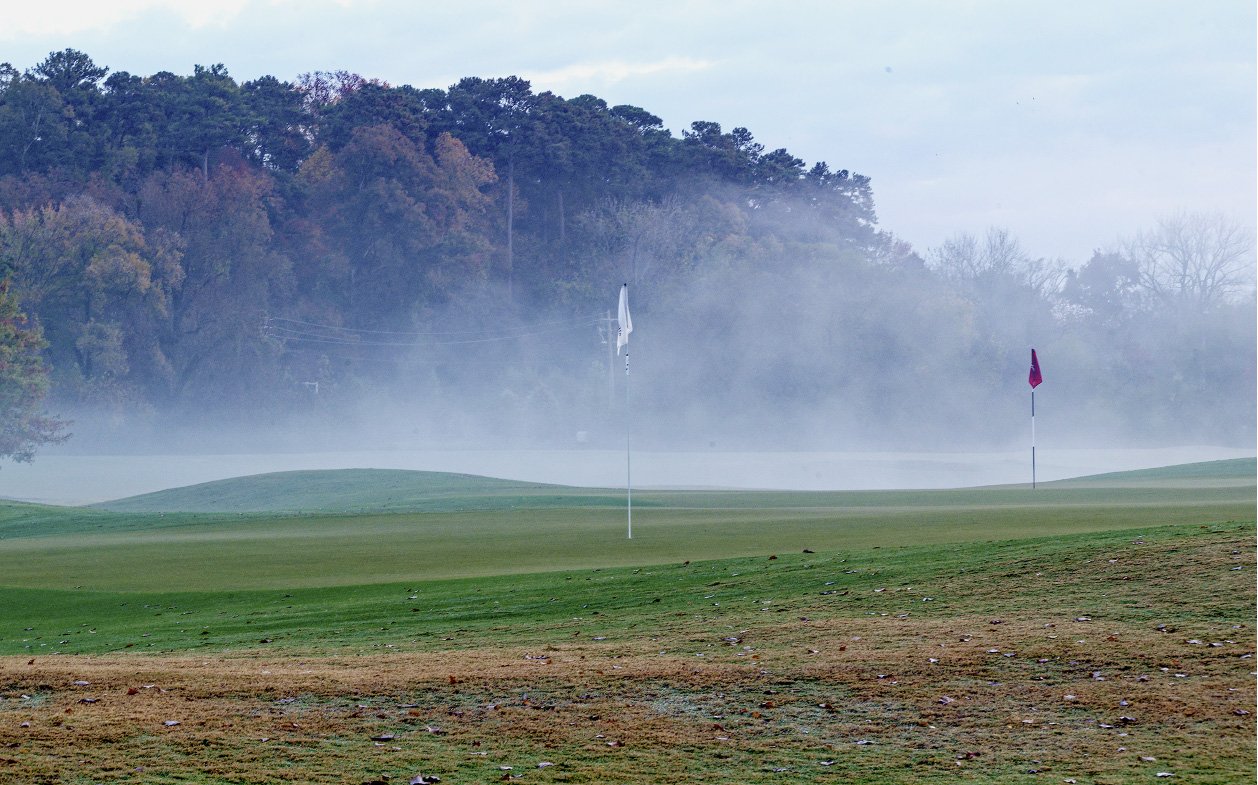Bobby Jones Golf Course – where legacy meets modernity
Golfers pay for time, comfort and quality
Lesen Sie den folgenden Beitrag ► HIER in deutscher Sprache.
When Bob “Bobby” Jones (although most people called him Bobby, he himself preferred to be called Bob) completed the Grand Slam in 1930, an incredible series of celebrations and accolades started all over the United States. Jones’s hometown Atlanta decided to honor her famous son by opening a municipal golf course in 1932, called The Bobby Jones Golf Course. But in the beginning of the 2000s, the course was no longer a tribute to the city’s famous golfer. The course had turned into a bad example of what municipal courses can be like and did not longer properly honor Bobby Jones’s name. Luckily, given restrictions prevented the land from being turned into a housing area – otherwise, the course might very likely be history today. What followed, is an amazing example of how private initiative and support in the United States can preserve an important historic venue. A group of Atlanta citizens with a strong passion for Bobby Jones, his legacy and the venue, gathered to found the Bobby Jones Golf Course Foundation, Inc.. More than 28 million USD were raised from private donations and helped the foundation to not only restore the course, but transform it into a lighthouse venue which nowadays is a clear tribute to Bobby Jones ethics in both, golf and life, and also helps to grow the game in the area. Originally, the course was an 18-hole-course and had no driving range or other, adequate practice facilities. At first, the plan was to renovate the existing 18 holes. The Foundation hired Bob Cupp, who designed such fantastic venues as the Augusta Country Club and contributed to rebuilds and renovations at Augusta National and Peachtree Golf Club in Atlanta (both with a strong link to Bobby Jones).
Martin Elgison, attorney of the Jones Family and also President of the Bobby Jones Golf Course Foundation, still remembers when Cupp told him, that they couldn’t make the existing course any better – it would still be a “lousy, dangerous course and irrigation and drainage would have to be replaced, though”, Elgison remembers in a meeting with Golfmanager’s senior editor Michael Althoff with a smile. On the other hands’ side, Elgison and others were convinced that there was a strong need for a driving range at the existing venue – and there was no room for a driving range and an 18 hole golf course on the given land. “With the limited land we had, a driving range plus a 9 hole course were our choice”, remembers the President of the financing foundation. The result is more than convincing: the venue not only provides an innovative 9 hole reverse design, but also has a big driving range, a putting practice area and a short course named Cupp Links. Furthermore, it is host to the Grand Slam Golf Academy. In addition, the Georgia Golf State Association and the Georgia Section of the PGA of America have found their new homes here close to the city center of Atlanta. To honor Jones’ legacy, the Bobby Jones Room in the clubhouse keeps the memory of this undisputable greatest golfer at least of his area alive. Furthermore, the Georgia Golf Hall of Fame is now part of the clubhouse, too.
Varied design thanks to reversible playing style
The golf facilities are not only very well layed out and maintained, but are a true reminiscence to Bobby Jones love to Scotland and especially The Home of Golf at St. Andrews. The genius design developed by Cupp underlines this perfectly. At first, the plan was just to built a typical nine hole course. “But then Bob Cupp called me one morning telling me we have more land than he would normally need for nine holes – and that he was inspired by the fact that The Old Course at St. Andrews was being played in reverse several times per year”, Elgison remembers.
No one else than Old Tom Morris decided in the late 1800s to play the Old Course counter-clockwise from his time on – previously, the course had mostly been played clockwise. Bob Cupp, whom Martin Elgison praises as one of golf’s golf course geniuses and masterminds, was convinced he had enough room for such course, including bigger greens. Nethertheless, Cupp needed about six months for this alternate design, as he had to consider trees, creeks and all other infrastructure. The result is amazing: all greens are big enough to host two separate pin positions for both playing directions. There are no dedicated tee boxes, which underlines the link between this course and a traditional Scottish Links course such as the Old Course. Eight tee box markers per hole provide great scoring opportunities for golfers of all skill levels – the course is meant to be fun, but challenging. Like in the original version of Augusta National at Jones’ times, the course in Atlanta has no rough. The two loops of the Bobby Jones Golf Course are now called Magnolia and Azalea, playing directions change every day – and those, who want to play 18 holes on one day, can address the pin position for the alternate playing direction on their second round. In addition, the putting practice area in front of the clubhouse is another tribute to St. Andrews, as it is very similar to the famous Himalayas putting, home to the St Andrews Ladies’ Putting Club and every Sunday a favorite especially to kids. As after building the range and the new course there was still some land left (for safety reasons the driving range had to direct away from the neighboring street), a five hole short course was added and originally named “Wee Links”. When Cupp passed away in 2016, the foundation decided to switch the name to “Cupp Links” in honor of the course designer, as Elgison explains.
The legacy of Bobby Jones to be experienced
The involvement of the Jones family today is mainly through Martin Elgison as the Jones’ family attorney. Bob Jones IV, grandson to Bobby Jones, was part of the original board. Honoring the legacy of Bobby Jones is spread among five venues in Atlanta: the Bobby Jones Golf Course, Atlanta Athletic Club, East Lake (which was where Bobby Jones started golf and was the original home of Atlanta Athletic Club at his time), and the Atlanta History Center. East Lake, a highly recognized venue at Bobby Jones’ times, saw a dramatic decline of the entire area in the 1960s, so the club moved about 25 miles north. Again called Atlanta Athletic Club it opened two new golf courses and dedicated a room to Jones’ legacy. Tom Cousins, a big fan of Bobby Jones, later bought East Lake, created the East Lake Community Foundation and helped not only to revitalize East Lake Golf Club, but also to develop the surrounding area. A lawyer and collector from Tallahassee donated his Bobby Jones collection to the new East Lake. With the exception of the Bobby Jones Golf Course, the Foundation has no ambitions in investing in other golf venues, as Elgison confirms to Golfmanager. But the legacy of Bobby Jones continues as part of the golf management company Bobby Jones Links (see Golfmanager ed. 02-2022 in German: ► Clubmanagement im Boutique-Stil: Bobby Jones links – Dem großen Namen verpflichtet), which was founded under the name Mosaic and who are now licensees to the Jones family.
Innovative Ideas in re-designing the course
The golf course is strictly pay and play – it neither offers memberships nor annual passes, the only discount provided goes to senior citizens of Atlanta. The foundation has a 50 years lease with the State of Georgia and therefore is the operator of the course. But as the foundation has no own employees, the management has been outsourced to Bobby Jones Links. The economic risks stays with the Bobby Jones Golf Course Foundation, as their president explains. Bob Cupp, who is still highly praised at the venue for his visionary approach during the project, is often cited with “Golfers will pay for time, convenience and quality”. This is the venue’s guideline until today. “The first three years of operation have all been completed at a profit and we are confident that this will be mainatined”, reports Elgison. With a clear focus on service quality, the venue follows a strategy of a premium golf course, which allows the operators to charge premium rates. Another success story of the renovated venue is the academy. “The trigger are juniors”, summarizes Elgison the secret of its success and praises the merits of Jason Kuiper, until today Director of Instruction at the Grand Slam Golf Academy. “Jason Kuiper ran a golf school in Pennsylvania in summer and in Florida in winter, before he came to us. He had an entire junior program ready, including what he would charge, which camps he will run and which clinics he would offer”, remembers Elgison. Furthermore, U.S. Kids Golf came into play early. Dan van Horn, an Atlanta citizen and owner of U.S. Kids Golf, met the President of the Bobby Jones Golf Course Foundation at an early stage of the project. His clear ambition: the venue shall become not only a U.S. Kids Golf Academy, but their best academy in the country! In consequence, he donated 250,000 USD from his foundation to make his plan happen. “We have about 5,000 homes with kids in walking or short driving distance around the course. More than 3,000 kids have gone through our junior program so far, in our peaks we had seven full time instructors”, Elgison describes the success of the academy – and its impact on growing the game. Additionally, free lessons in cooperation with the YMCA are offered. First Tee has its home at a different venue. “The Kids in our neighborhood are mainly well situated, their families can cover their expenses for golf”, Elgison says. With regards to the huge amount of kids entering the game he continues: “We are still profiting from the Tiger Woods effect. No other country has a Tiger Woods, his impact on bringing kids, but also minorities into the game, is still incredible”.
100-year celebrations for unique Grand Slam success begin in 2023
Of course the venue still profits from the name and legacy of Bobby Jones. “He was a classy guy full of integrity”, says Elgison with all his experience and knowledge as the family’s attorney. The indisputable fame of Jones is first of all based on the Grand Slam – until today this separates him from all other golfers including names such as Walter Hagen, Sam Snead, Arnold Palmer, Jack Nicklaus and Tiger Woods. Additionally, his game record is still both, unbelievable and unbeaten: in just 7 years he won 13 national championships. But the end of his playing career is remarkable, too. “He retired at the prime of his career, while most others hang on way too long compared to their peak”, Elgison states. The reason to do so seems astonishing with regards to today’s price moneys and sponsorships in professional golf: “He had to finance a family with kids and did not see any chance to do this as a professional golf player”, Elgison explains with insider knowledge. But Jones was not only probably the smartest golfer ever, he also had some incredible achievements off the course: Georgia Tech engineering degree, Bachelor of Arts in English Literature from Harvard College, Emory University School of Law and passing the Georgia bar exam after only 3 semesters. “Mr. Jones was not only the best golfer of his time but was also very intelligent. He was a prodigy and even won a national championship when he was still in high school”, adds the President of the foundation. Jones’ legacy and ethics are still part of the game, especially in amateur golf. “Sportsmenship, integrity, taking off the hat after 18 and shaking hands – that’s all a legacy of Bob Jones and US amateur golf still has much of these”, Elgison states.
With regards to Bobby Jones’s Grand Slam in 1930, the foundation in cooperation with Bobby Jones Links have started to set up the plans for the centennial celebration of this unique achievement in golf. It has already been announced that the US Amateur Championship 2030 will be held at Atlanta Athletic Club and the U.S. Open 2030 at Merion. “We are hoping The Open will be held at St. Andrews and the British Amateur at Hoylake (Royal Liverpool) – those were two of the four venues where he won during the Grand Slam”.
The celebration will already start in 2023 – as Jones has won at least one Major Championship from 1923 until 1930. “This will be a big deal for golf, and the Jones family recognizes this”, Elgison confirms. As 2030 is still far away, plans for the 100th anniversary have not yet been finalized. “We are working in close cooperation with the USGA and have not yet decided whether we will have one big event or numerous smaller ones”, he explains the status of the planning. A logo has already been developed, so that merchandising will start soon. So all in all, celebrations will not be limited to 2030, but be an almost seven year long campaign. One very important reason why Bobby Jones and his achievements – although his playing career as an adult only lasted several years – are still present to many golfers in and outside the USA is, according to Elgison, the annual The Masters. “This tournament – the only Major, which is held at the same venue every year – guarantees that he will be remembered forever, the tournament brings back all the memories on him and his achievements every year”, concludes Elgison.
Author: Michael Althoff | golfmanager 1/2023

